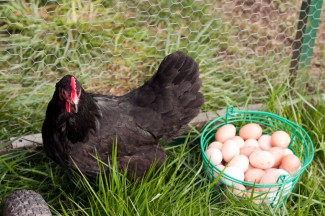How far would you go to win an energy-saving contest? The Hall family of Bellevue, Washington turned off their lights, unplugged all nonessential appliances, brewed their coffee and cooked their meals outside, and used computers at the library instead of at home. In one month, they reduced their energy consumption by 94%, easily winning the grand prize—a $7,500 Lowe’s gift card—in the Be an Energy Rockstar contest sponsored by Puget Sound Energy. Students at Minnesota’s Carleton College went even further: they camped outside for the duration of their winter campus competition.
Other games inspire less extreme energy-saving strategies—and not just short-term ones. In the Ugliest Lighting Contest, the city of Palo Alto got its citizens to submit pictures of their most hideous incandescent or halogen lighting by offering the winner $400 toward an LED upgrade. The contest helped draw attention to the city’s many rebate programs for other efficiency upgrades, like appliances and solar panels. It was a quirky—and clever—strategy for raising awareness about something much larger than a light bulb.
These are just a few examples of the gamification of energy efficiency. Gamification—still a new enough term that my auto-correct always wants to change it to "ramification"—refers to the strategy of turning a real-world activity into a game in order to make people more likely to do it.
ACEEE’s new report, Gamified Energy Efficiency Programs, focuses on this cutting-edge approach. We surveyed 53 games and apps from the US and around the world to see what made them tick and whether they actually did save energy.
We found several energy-saving games in which the winners achieved remarkable reductions: the energy Rock Stars of Bellevue, Washington (94% reduction), a San Diego family that won its city’s title of Biggest Energy Saver (46% reduction), the winner of Brooklyn's Reduce the Use (49% reduction), and the winning multifamily building in the Chicago Neighborhood Energy Challenge (34% reduction across electricity, gas, and water usage).
What really matters, though, is not the thriftiness of these individuals, but large-scale, sustainable savings through behavior change. Nine of the games we studied have compiled overall energy savings data indicating that savings of 3–6% are attainable among large groups, and that in smaller-scale, tightly targeted programs, savings of 10% are a potential goal. Some games even focus on appliance upgrades and other measures with long-term impact.
The best of these games and apps use some pretty ingenious strategies to motivate you to reduce your energy use. Take Leafully for example.
How many trees does it take to offset the carbon produced by the electricity you used last month? Leafully will tell you. Download this free app to a smartphone, tablet, or computer; then automatically import your utility bills, and Leafully will track your usage, alerting you when it’s abnormally high or impressively low, and telling you how much "sleeping energy" you're using (for appliances that can’t be shut off, like refrigerators). All this information is displayed as little green trees, reflecting the number of trees needed to sequester the carbon you produced (based on EPA calculations). Leafully can predict your personal savings from carpooling or upgrading an appliance; it can even help you offset your carbon emissions by purchasing renewable energy certificates.
Gamification can help whole communities save energy. In Brooklyn, city councilman Brad Lander encouraged energy saving among his constituents by entering himself in his district’s Reduce the Use competition. Every month, households received a statement showing not only how their energy use ranked compared to their neighbors, but also compared to Councilman Lander. When Lander’s bills went up or down, everyone knew about it.
In Vermont, teams representing towns compete every spring to win points for completing various challenges: saving energy, using reusable grocery bags, composting, changing transportation habits, and even making videos or writing about their efforts. You don’t even have to live in the state to play Vermontivate. Join a friend or relative’s team and your own sustainable actions can contribute to their success. They’ll probably even let you come to the end-of-game Ben and Jerry's ice cream party.
You may be wondering about the chicken fedoras in my title. That brings us to Energy Chickens. In this game you are responsible for the health and well-being of a small group of adorable chickens living on a virtual farm. The catch? Each chicken represents a light or electronic device in your office. Left your printer on all night? Prepare to see that chicken looking withered and green the next morning. Remembered to turn off your computer? That chicken will grow and thrive. Keep up the good energy-saving behavior and your chickens will start laying eggs, which you can use in the virtual general store to buy things like flowers, fruit bushes, gnomes, and yes, fedoras for your chickens. The more energy you save, the happier and more beautiful your chickens and farm will become.
Hats off to the creators of Energy Chickens, and to all the other seriously fun games in our new report.




